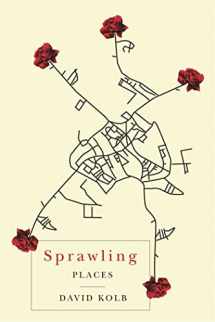
Sprawling Places
ISBN-13:
9780820329895
ISBN-10:
0820329894
Edition:
Illustrated
Author:
David Kolb
Publication date:
2008
Publisher:
University of Georgia Press
Format:
Paperback
280 pages
FREE US shipping
Book details
ISBN-13:
9780820329895
ISBN-10:
0820329894
Edition:
Illustrated
Author:
David Kolb
Publication date:
2008
Publisher:
University of Georgia Press
Format:
Paperback
280 pages
Summary
Sprawling Places (ISBN-13: 9780820329895 and ISBN-10: 0820329894), written by authors
David Kolb, was published by University of Georgia Press in 2008.
With an overall rating of 3.9 stars, it's a notable title among other
books. You can easily purchase or rent Sprawling Places (Paperback) from BooksRun,
along with many other new and used
books
and textbooks.
And, if you're looking to sell your copy, our current buyback offer is $0.55.
Description
People often bemoan the spread of malls, suburban strips, subdivisions, and other sprawling places in contemporary America. But are these places as bad as critics claim? In Sprawling Places, David Kolb questions widely held assumptions about our built environments.Kolb agrees there is a lot not to like about many contemporary places, but to write them off simply as commodified “nonplaces” does not treat them critically. Too often, Kolb says, aesthetic character and urban authenticity are the focus of critics, when it is more important to understand a place’s complexity and connectedness. Kolb acknowledges that the places around us increasingly have banal exteriors, yet they can be complex and can encourage their inhabitants to use them in multiple, nonlinear ways. Ultimately, Kolb believes human activity within a place is what defines it. Even our most idealized, classical places, he shows, change over the course of history when subjected to new linkages and different flows of activity.Engaging with the work of such writers and critics as Henri Lefebvre, Manuel Castells, Karsten Harries, and Christian Norberg-Schulz, Kolb seeks to move discussions about sprawl away from the idea that we must “choose between being rooted in the local Black Forest soil or wandering in directionless space.” By increasing our awareness of complexity and other issues, Kolb hopes to broaden and deepen people’s thinking about the contemporary built environment and to encourage better designs in the future.


We would LOVE it if you could help us and other readers by reviewing the book
Book review

Congratulations! We have received your book review.
{user}
{createdAt}
by {truncated_author}


